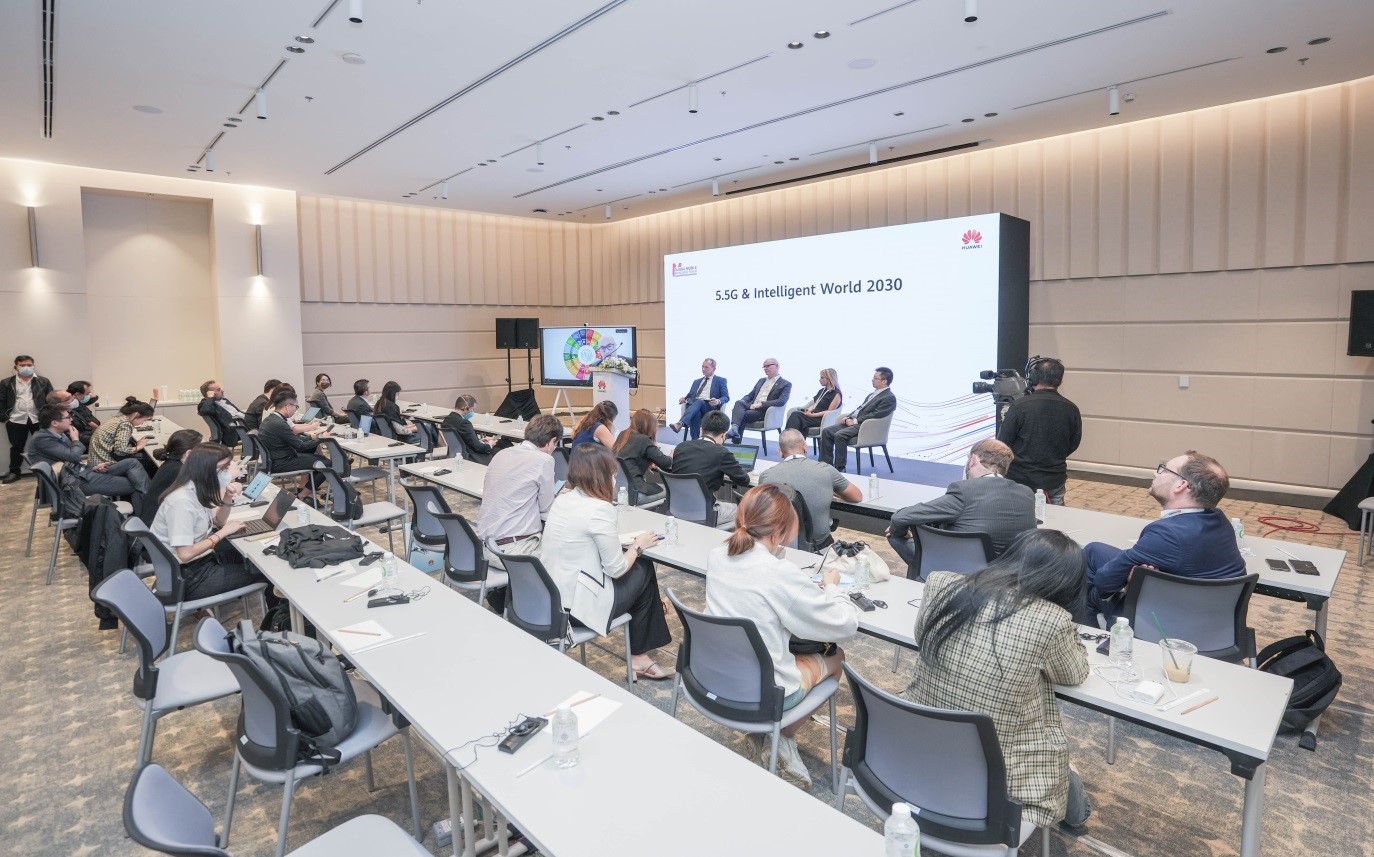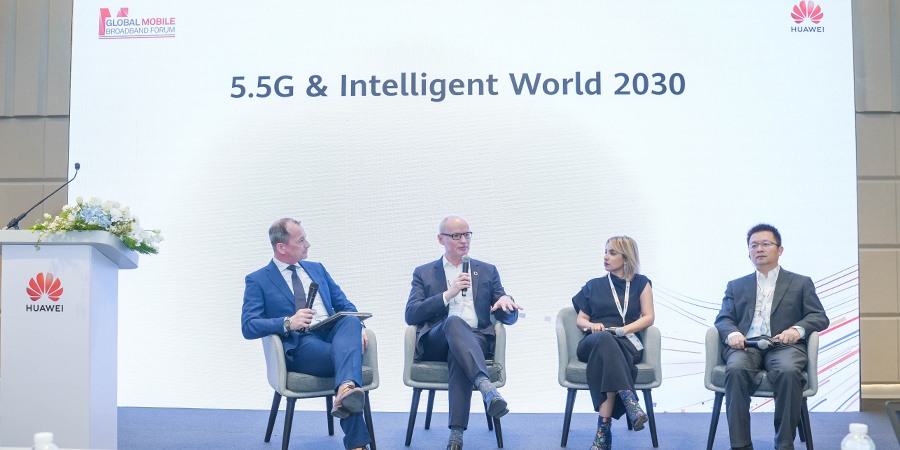The Global Mobile Broadband Forum 2022 hosted by Huawei and organized together with its industry partners GSMA and GTI kicked off yesterday. The annual event gathers mobile network carriers, vertical industry leaders, and ecosystem partners from around the world to discuss how to make 5G a commercial success, as well as other high-priority industry topics like green development, intelligence, and 5G evolution.
Telecom Review was invited to the Huawei media round table that took place on the sidelines of the Global MBB Forum 2022 in Bangkok. Under the banner “Stride to 5.5G for a Better Intelligent World,” the insightful discussion by expert panelists on the transition to 5.5G technology was well attended by the global media both onsite and online. Panelists included John Gao, 5.5G general manager, Huawei; Moon Jerin, Aeindri Protocol CEO, former president of IEEE Women-in-Engineering; Alex Sinclair, chief technology officer for the GSMA; and Walid Mathlouthi, head of future networks & spectrum management, ITU.
In its vision for an intelligent world as 5G technology evolves, Huawei is championing the implementation of the next phase of 5G, which is 5.5G. The key characteristics of 5.5G incorporate the 10 Gbps experience, 100 billion connections and native intelligence. To meet the growing demands of toC and to services, 5.5G connectivity will enhance eMBB, URLLC and mMTC, and provide new capabilities of sensing, passive IoT, positioning and native intelligence that support 10 Gbps downlink, 1 Gbps uplink and 100 billion connections.

Global media representatives attended the Huawei media round table in Bangkok
To make 5.5G a reality, standards, spectrum, products and the ICT ecosystem have to mature to allow more new-generation applications to emerge. Applications such as multi-sensory interactions, intelligently connected vehicles and intelligent connections across industries will transform the way we communicate, move and upgrade our industries. There is an urgent need for all industry stakeholders to collaborate on the exploration and creation of these applications.
During the Q&A session, Telecom Review proposed the question: how will the implementation of 5.5G impact the evolution of the metaverse, particularly in the Middle East region, and how is Huawei shaping that?
Responding to the first part of the question, Moon Jerin said that 5.5G will complement the metaverse strategy in many ways. She cited examples of the UAE, Saudi Arabia, and South Korea that are spearheading the concept of the metaverse. Moon picked the example of the Neom project in Saudi Arabia, which is charting the metaverse both in terms of community as well as industry.
“If we look at the Neom metaverse, one of the things they're trying to do is bring in offices using digital twin technology, and companies are opening their headquarters in the metaverse so that people can visit their offices virtually.” She also touched upon the element of digital inclusion in the metaverse, where the use of AR and VR technology can enable people to create their own avatars to participate in various events and activities around the globe.
Giving an overview of Huawei’s involvement in the metaverse strategy in the Middle East, John Gao said that Huawei is actively collaborating with UAE telecom operators in this regard. “We are engaged in in-depth cooperation trying to see how we can implement the strategy. Metaverse is a big new concept, and the telecommunication industry provides the infrastructure.”
He highlighted three broad areas where Huawei can contribute to the metaverse strategy. “Firstly, the metaverse will demand much higher requirements on the telecommunication networks. That's why we need new spectrum bands to meet the demand. Huawei has been conducting testing with the UAE telecom operators on 6 GHz and the millimeter wave band,” he said.
“Secondly, we can also roll out technological innovations as the UAE is a market that has high demands on capacity. We have already developed the technical solutions to address the increased demands on capacity, and now we are working with industry partners, trying to define it in release 18,” he explained.
“Thirdly, we can introduce customized innovations to serve the specific needs in the UAE as well as the wider Middle East. We have a competent local team that has been collaborating with telecom operators, trying to roll out diverse innovations to meet their needs,” he concluded.
During the Global MBB Forum 2022, David Wang, Huawei Executive Director of the Board and Chairman of ICT Infrastructure Managing Board, delivered a keynote speech titled 'Stride to 5.5G: The foundation of the future' noting how, through concerted efforts, the industry has made significant progress and is ready to make the leap to 5.5G. "To hit this milestone, all industry players need to prepare on all fronts so that the world can move faster towards the 5.5G era and eventually build a better, intelligent world together," Wang stated.Huawei was the first to propose new directions for 5.5G, with the aim of promoting sustainable development for 5G into the future. Huawei first proposed an outline for 5.5G in 2020, and 3GPP officially named the concept "5G-Advanced" in 2021. As an upgraded version of 5G, its features will power future industries such as the IoV, IoT, robotics, and manufacturing, and serve as a key driving force of the digital economy.
Also read: Huawei OTF 2022: Further Unleash Transformation Toward DigiVerse 2.0
Also read: MBBF 2022: Huawei's Yang Chaobin Launches All-Band 5G Solution Series
Also read: Huawei's David Wang: Stride to 5.5G for a Better, Intelligent World
